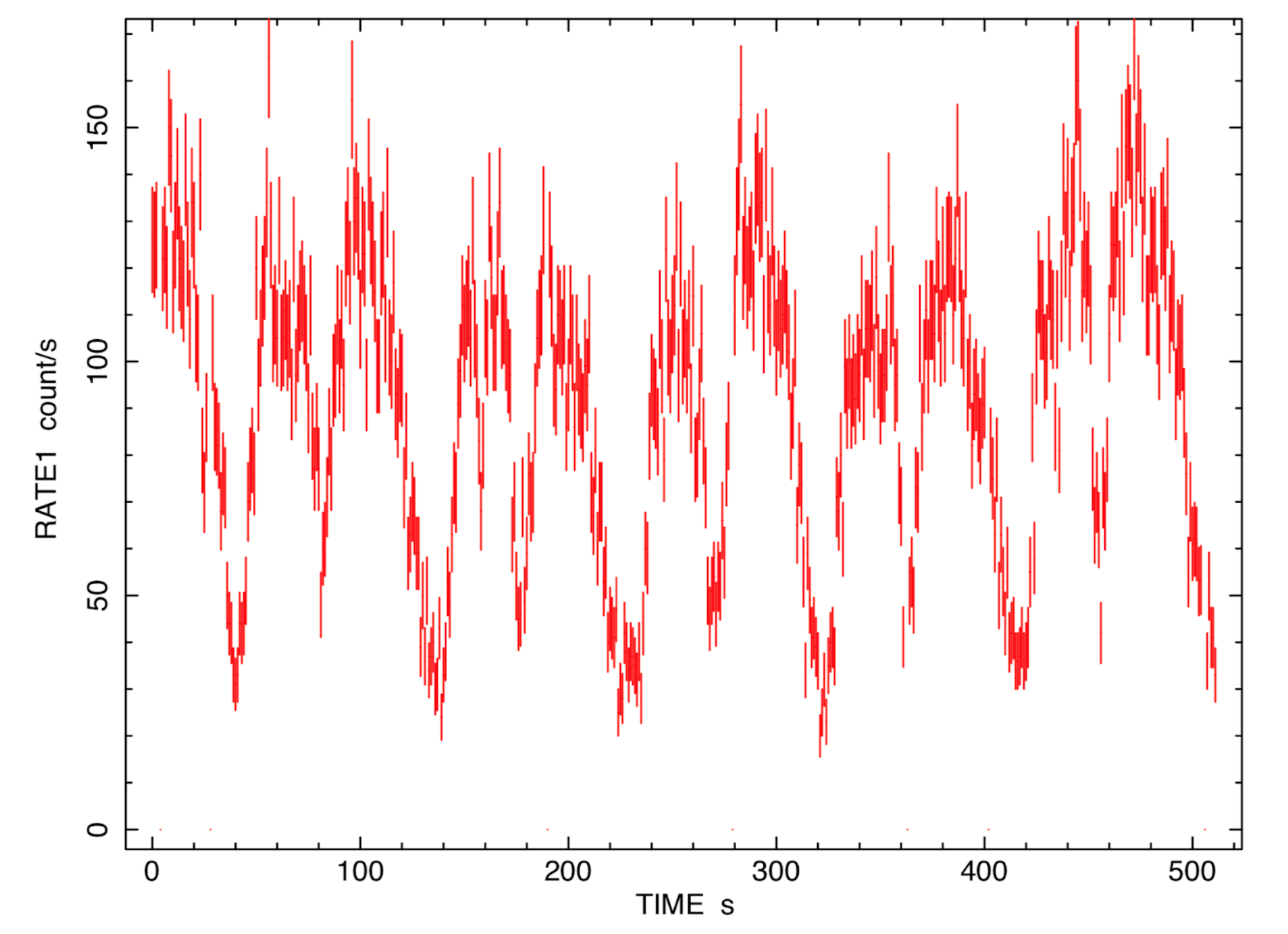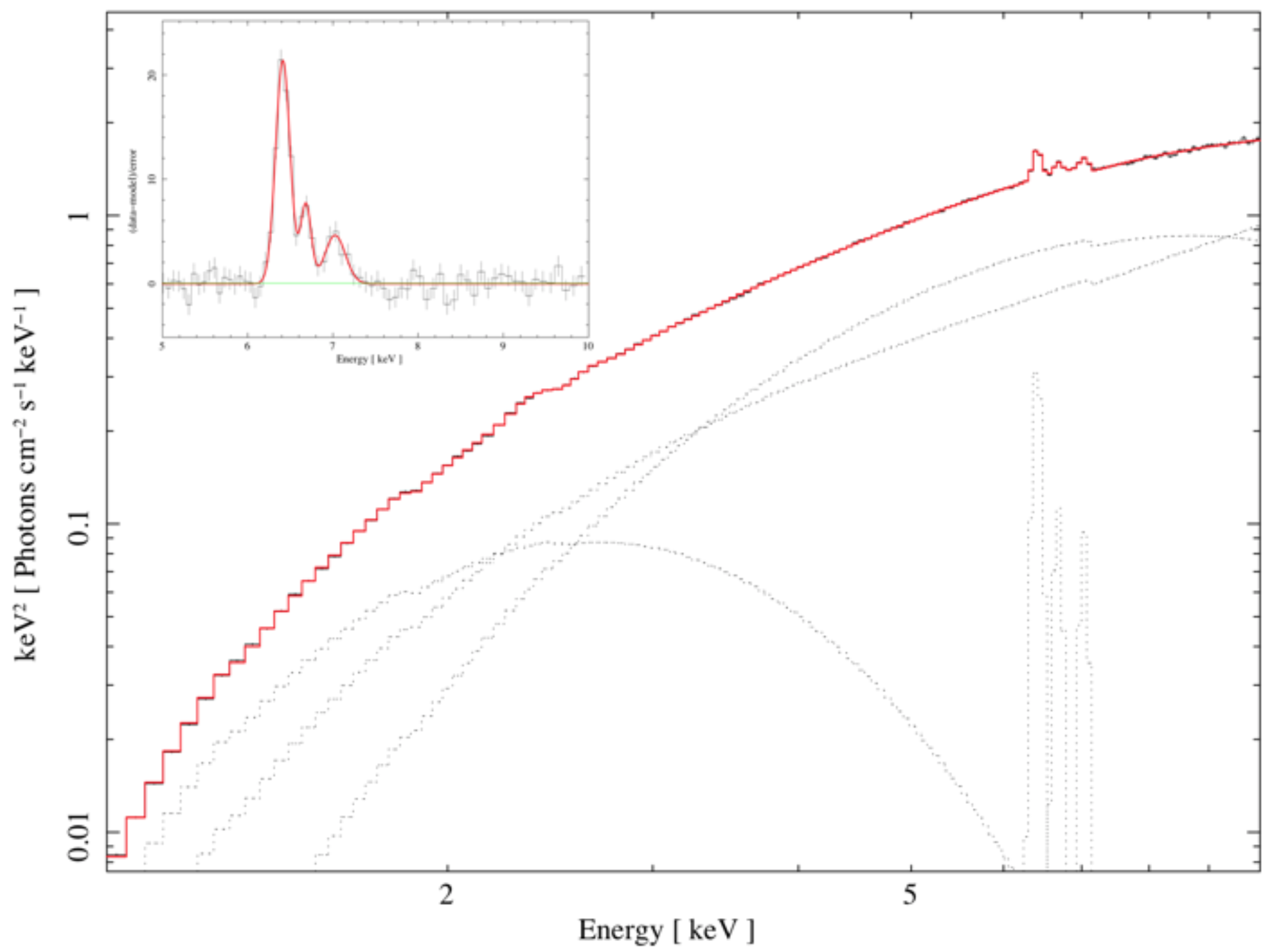NICER / ISS Science Nugget
for May 21, 2020
B(e) X-ray binary system GRO J1008-57 caught in an outburst
Pulsars are the most stable clocks in the universe. This is because they are powered by rotating
neutron stars, which pack 1-2 Solar masses of material into a sphere just 25 km across. However,
even these massive flywheel clocks can be sped up, in the right situation. "B(e) X-ray binaries"
are star systems with a massive B-type star – one that rotates so rapidly that it loses gas through
its equator – in a highly eccentric orbit with a neutron star. When the neutron star plunges
through the equatorial "decretion disk" outflow, it can rapidly accrete so much material that it is
measurably spun-up by the transfer of angular momentum. In such systems, we can explore some of the
strongest magnetic fields and most extreme objects in the universe by observing how they interact
with the accreting gas. These interactions often exceed the "Eddington limit" – the point of
pressure balance between gravitation pulling material in and radiation pushing matter out.
Violations of the Eddington limit are rare but extremely important. NICER observations of the B(e)
X-ray binary system GRO J1008-57 are poised to help astronomers better understand all of these
phenomena.
GRO J1008-57 is a well known Be X-ray binary, consisting of a neutron star in an elliptical
249.5-day orbit around a B-type star. The neutron star is known to rotate once every 93 seconds
(Figure 1) and is suspected to have a magnetic field of greater than 1 trillion Gauss (or over 1
trillion times that of planet Earth!). This binary system is currently undergoing extraordinary
X-ray brightening driven by increased accretion onto the neutron star; such outbursts occur every
few years, with the last one seen in 2016 (before NICER was launched).

Figure 1:
X-ray intensity of GRO J1008-57 measured by NICER in the 0.3-12.0 keV photon energy band – a deep double-peaked
modulation with a period of approximately 93.205 seconds is evident.

Figure 2:
NICER X-ray spectrum of GRO J1008-57 (black histogram), with a best-fit model spectrum (red histogram) overlaid.
The components of the model (black dotted traces) include thermal emission from a hot accretion disk, some
associated nonthermal emission, local and interstellar absorption of X-rays, and fluorescence around 6-7 keV from
ionized iron atoms in the disk (inset).
This work is described in Astronomer's Telegram #13749 by M. Reynolds (Univ. of Michigan) and collaborators.
<< Previous
Main Index
Next >>